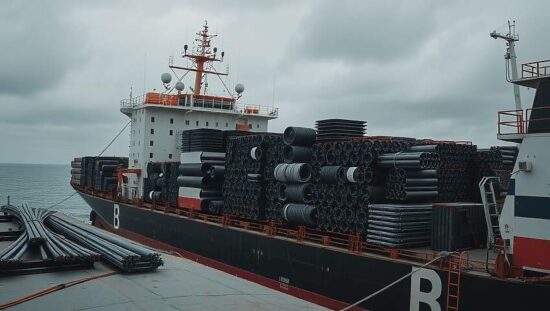German Steel and Aluminum Exports Signal Economic Realignment
German steel and aluminum exports are experiencing a marked shift in destination and volume, highlighting a potentially significant realignment in international trade dynamics.. Official data released this week reveals a 2.3% decline in steel and related product exports to the United States between January and August 2025, amounting to €2.5 billion. While seemingly minor, this decrease underscores a broader trend: overall German steel and aluminum exports are facing headwinds. Total steel and steel product exports plummeted 4.8% year-on-year to €39.9 billion for the first eight months of 2025 – the lowest level since 2021.
The United States, once a more prominent market for German steel, now ranks sixth among Germany’s leading import partners – a clear indication of evolving trade patterns. The EU continues to be the primary destination, with Poland leading the way with exports totaling €3.7 billion, followed by France (€3.2 billion) and the Netherlands (€3.0 billion). The downturn in US demand raises questions concerning the impact of protectionist trade policies and potential shifts in American industry.
Germany’s overall import landscape is also seeing adjustments. While steel imports decreased by 2.7% to €34.0 billion during the eight-month period, aluminum imports saw an increase of 5.0% to €13.8 billion. Italy remains the largest source of steel imports, followed by Austria and China. The discrepancy between falling export volumes and rising import quantities signals a potential vulnerability in Germany’s industrial sector.
The trends are mirrored in aluminum exports, where shipments to the US fell by 7.4% to €419 million. While aluminum exports overall saw a slight increase (5.1%), the decline in US demand places the country at a distant tenth place among German trade partners. Notably, the EU continues to be the dominant receiver of aluminum, mirroring the steel export pattern.
The data paints a complex picture. While the EU largely absorbs German steel and aluminum output, the contractions in key markets like the United States suggest a potential struggle for exporters. Analysts are already speculating on the possible ramifications for German industrial policy and calls are growing for a deeper examination of the factors contributing to these shifts and the ability of the German economy to adapt to these revised trade flows. The increase in aluminum imports, coupled with falling export volumes in key sectors, warrants close monitoring to ensure Germany’s continued industrial competitiveness.





